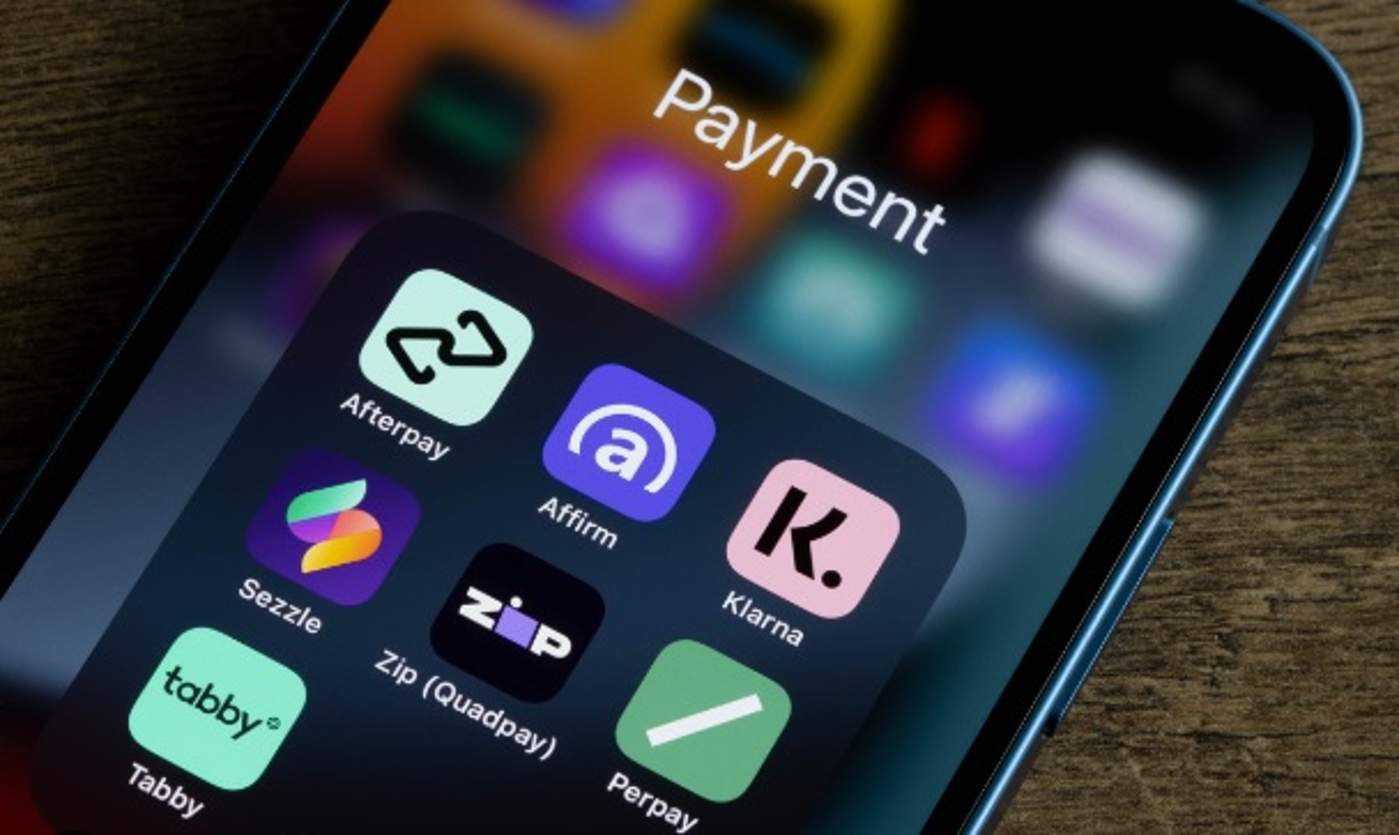In the landscape of retail, one phenomenon has emerged as a game-changer: Buy Now, Pay Later (BNPL) services. These innovative payment solutions have revolutionised the way consumers shop, offering flexibility and convenience like never before.
While BNPL was initially associated with fashion and tech purchases, its influence is now extending into the realm of home and lifestyle retail. From furniture to home décor, appliances to DIY supplies, BNPL is unlocking a world of opportunities for both retailers and consumers
Latest reports released for the year 2024, it has been revealed that a significant milestone has been reached in the United Kingdom’s financial landscape.
Approximately half of UK adults, accounting for a staggering 26.4 million individuals, have embraced the convenience of Buy Now, Pay Later (BNPL) services marking a substantial increase from just 36% recorded at the onset of 2023, indicating a notable shift in consumer behavior towards alternative payment methods.
Further analysis of the data unveils that 38% of British citizens utilised BNPL services within the year leading up to January 2024.
Additionally, 14% of consumers availed themselves of this option for the first time during this period, signifying a growing acceptance and adoption of BNPL services across the nation.
Study Reveals: 92% of Consumers Find BNPL Services Beneficial
A recent survey conducted among consumers has unveiled a significant trend in the utilization of Buy Now, Pay Later (BNPL) services.
According to the findings, a staggering 92% of users reported finding BNPL services useful. Among the reported benefits, 78% stated that BNPL options assist them in managing their finances effectively.
Additionally, 76% of respondents highlighted that BNPL allows them to make purchases that would otherwise be beyond their immediate financial reach. This study sheds light on the growing popularity and perceived utility of BNPL services among consumers.
Who is the target audience for BNPL?
A recent study investigating the distribution of Buy Now, Pay Later (BNPL) offers among consumers has revealed intriguing insights. According to the findings, 60% of respondents boasting credit scores surpassing 760 reported receiving BNPL offers.
In contrast, approximately 80% of individuals with credit scores below 620 were offered BNPL options. Notably, the research highlighted a correlation between BNPL offers and recent credit-related activities.
Those who encountered credit application rejections or experienced loan delinquencies within the past year were found to be more likely recipients of BNPL offers.
The Rise of BNPL in Home and Lifestyle Retail
Historically, large-ticket expenditures in the home and leisure industries necessitated meticulous budgeting and preparation.
Consumers frequently avoid investing in high-value things owing to financial restrictions or worries about affordability. However, BNPL companies, such as Derefit, have altered the game by allowing customers to divide their payments into smaller, more affordable instalments
This greater flexibility has appealed to individuals looking to improve their living areas without breaking the budget. Whether it’s a new couch for the living room, a cutting-edge kitchen gadget, or a stylish piece of wall art, BNPL enables customers to buy with confidence, knowing they can spread the expense over time.
Empowering Consumers with Choice
One of the primary advantages of BNPL for home and lifestyle merchants is its ability to reach a wider spectrum of customers. Retailers may accommodate to customers with diverse financial situations and preferences by providing various payment choices.
Whether a customer chooses to pay in whole, with a credit card, or with BNPL, shops may meet their preferences, raising conversion rates and driving sales.
Furthermore, BNPL targets younger populations that may be more comfortable with digital payments and are used to subscription-based services.
By incorporating BNPL into their checkout process, merchants can reach out to this audience and build long-term connections with the future generation of homeowners and interior aficionados.
Boosting Average Order Values
Another key benefit of BNPL for home and leisure stores is its capacity to increase average order value (AOV). By breaking down the expense of larger purchases into smaller instalments, BNPL encourages customers to look into other items and accessories that they would have otherwise neglected.
A consumer looking for a new mattress, for example, may elect to add a set of luxury pillows or a fashionable bed frame to their purchase when given the option to pay in instalments. This not only boosts the retailer’s income per transaction, but it also improves the whole shopping experience for the customer.
AFIA Report Reveals Consumer Behavior in BNPL Usage
The Australian Finance Industry Association (AFIA) has released its highly anticipated 2022 industry report, shedding light on the habits of Buy Now, Pay Later (BNPL) consumers.
According to the report, the average BNPL user engages with a BNPL product approximately 18.2 times annually. Moreover, each transaction made through BNPL platforms amounts to an average expenditure of $136.
Reducing Cart Abandonment Rates
Cart abandonment is a prevalent issue for online sellers in all sectors. However, BNPL can assist in alleviating this problem by addressing one of the key reasons customers abandon their carts: worries about pricing. By accepting BNPL as a payment method at checkout, shops may help customers overcome financial hurdles and finish their transactions with confidence.
Moreover, BNPL eliminates the need for customers to provide sensitive financial information or go through a credit check, expediting the checkout process and removing friction points that may dissuade potential purchasers.
Driving Brand Loyalty and Repeat Purchases
In addition to attracting new consumers and improving sales, BNPL may boost brand loyalty and repeat purchases for home and lifestyle stores. Offering a fast and flexible payment option allows merchants to improve the entire shopping experience and develop favourable connections with their brands.
Furthermore, BNPL providers frequently give loyalty programmes and incentives to attract repeat business, such as unique discounts or awards for prompt payments. This not only encourages customers to return to the merchant for future purchases, but it also improves the business’s connection with its customers.
Navigating Responsible Lending Practices
While BNPL provides significant benefits to home and lifestyle stores, it is critical to follow responsible lending practices to achieve positive outcomes for both customers and companies. Retailers should work with credible BNPL providers who value openness, affordability, and responsible lending practices.
Furthermore, shops should inform customers about the terms and circumstances of BNPL agreements, including repayment schedules, interest rates, and any penalties. By helping customers make educated decisions, businesses may increase trust and credibility while lowering the danger of financial hardship or default.
The Level Of Consumer Complaints Against BNPL Is Low.
The latest findings from ASIC’s Consumer Monitor shed light on the prevalence of issues among various credit products, with notable percentages of consumers reporting concerns.
According to the report, 3% of surveyed individuals expressed issues with Buy Now Pay Later (BNPL) services, while the same percentage reported problems with credit cards. Additionally, 10% experienced difficulties with payday loans, and 11% encountered issues with personal loans exceeding $5,000.
In a separate analysis, the Australian Financial Industry Association (AFIA) disclosed data regarding complaints received by the Australian Financial Complaints Authority (AFCA) between July 2020 and June 2021.
During the above period, AFCA recorded 767 complaints related to BNPL services, constituting 0.01% of the 5.9 million BNPL accounts. In comparison, AFCA received 9,902 complaints about credit cards, representing 0.08% of the 12.6 million personal credit card accounts.
The rate of complaints filed with AFCA against BNPL firms per BNPL customer in the fiscal year 2021-2022 stood at 0.015%. However, concerns persist among consumer groups regarding the accessibility of external dispute resolution (EDR) mechanisms.
Many BNPL providers are criticised for failing to adequately inform consumers about their rights to access AFCA for dispute resolution. ASIC’s Q1 2022 consumer monitor report revealed that only 52% of consumers were aware of their right to lodge complaints with an EDR agency regarding BNPL providers.
Despite the challenges, most complaints directed at BNPL providers were swiftly acknowledged and resolved. AFCA data indicated that 68% to 75% of complaints were unilaterally resolved by the firms, with an additional 5% to 6% settled through negotiation.
This trend may reflect the practical considerations faced by companies when addressing complaints related to relatively small amounts, considering the associated costs of defense.
Summary & Conclusion – BNPL’s Influence On Home And Lifestyle Retailers
To summarise, BNPL is revolutionising the home and lifestyle retail market by providing consumers with unparalleled freedom and ease in their shopping process.
From providing consumers with more options and raising average order values to lowering cart abandonment rates and enhancing brand loyalty, BNPL offers a plethora of chances for retailers to prosper in an increasingly competitive industry.
By adopting BNPL as a strategic payment option, home and lifestyle merchants may attract new consumers, increase sales, and improve the whole shopping experience, therefore establishing themselves for long-term success in the digital age of retail.
However, merchants must manage prudent financing methods and prioritise transparency to guarantee that both customers and companies benefit. With BNPL, the future of home and lifestyle retail looks brighter than ever.







